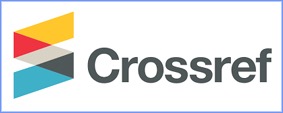Analisis Bahasa Ken dalam Reality Show Dairy Sarwendah
DOI:
https://doi.org/10.29240/estetik.v3i1.1471Keywords:
Ken language, language variety, sociolinguisticsAbstract
This study aimed to describe Ken language in a reality show "Sarwendah Diary". In sociolinguistic studies, Ken language is included in the variety of languages as a form of various languages used by certain groups of people. This study used a descriptive qualitative research by describing the use of Ken language contained in a reality show. The documentation technique was used for data retrieval by listening, taking notes, and portraying from the realty show video "Sarwendah's Diary". Content analysis technique was used in this study to get the deep meaning of each Ken language used. In addition, the method of triangulation was also applied as to pursue the data validity. Based on the results of the analysis, Ken language was found in some videos entitled (1) Sarwendah Becomes a Scavenger in Medan, (2) the Disguise of Sarwendah and Betrand Peto in Makassar Sarwendah diary, (3) Willingly Lendinga Cell Phone to a Scavenger, This Pecel Seller Gets a Fortune from Sarwendah, (4) Running Out of Costs Sarwendah is Assisted by a Vegetable seller. From the videos, we found several Ken languages that Sarwendah used in her disguise.
Downloads
References
Anto, R. (2018). Aspek Perilaku Manusia Sebagai Makhluk Individu dan Sosial, 5(August), 1–4.
Azizah, F. N., Ain, N. N., Kevi, A., & Fasya, M. (2019). Variasi Bahasa Ken Dalam Lirik Pengantar Pengamen Jalanan (PUNK ), (2015), 161–164.
Cahyandani, N. (2012). Register Bahasa Ken Pada Pengemis Di Lingkungan Kota Surakarta, 1–16.
Chaer, Abdul dan Leonie Agustina. 2002. Sosiolinguistik: Perkenalan Awal. Jakarta: PT Rineka Cipta.
Chairunisa, R. (2014). Dramatisasi Program Reality Show MASTERCHEF INDONESIA Di RCTI, 1–28.
Giyoto. 2013. Pengantar Sosiolinguistik. Surakarta: Fataba Press.
Keraf, Gorys. 1991. Tata Bahasa Rujukan Bahasa Indonesia untuk Tingkat Pendidikan Menengah. Jakarta: Gramedia Widiasrana Indonesia.
Kridalaksana, Harimurti. 2007. Kelas Kata dalam Bahasa Indonesia. Jakarta: Gramedia Pustaka Utama.
Giyoto. 2013. Pengantar Sosiolinguistik. Surakarta: Fataba Press.
Malabar, Sayama. 2015. Sosiolinguistik. Gorontalo: Ideas Publishing.
Rahardi, Kunjana. 2006. Dimensi Dimensi Kebahasaan. Yogyakarta: Erlangga
Senjaya, A., Wahid, F. I., Saputra, D. Y., Lathfullah, M., & Fasya, S. (2018). Kajian Sosiolinguistik Pemakian Variasi Bahasa Ken (Cant) Oleh Para Pengemis di Lingkungan Lampu Merah Kota Serang, Provensi Banten, 3 nomor 2, 111–118.
Sholihah, I. (2013). Analisis Sosiolinguistik Bentuk Bahasa Penolakan Dalam Transaksi Jual Beli di Pasar Klewer Surakarta, 1–14.
Soeparno.2002.Dasar-dasar Linguistik.Yogyakarta:PT. Tiara Wacana Yogya
Sugiyono. 2018. Metode Penelitian Kualitatif. Alfabeta: Bandung.
Wijana, I Dewa Putu. 2011. Berkenalan dengan Linguistik. Yogyakarta: A.Com Advertising.
Downloads
Published
How to Cite
Issue
Section
Citation Check
License
Copyright (c) 2020 Indah Wahyuningsih, Meita Ardya Fahma, Muhammad Rais Almajid

This work is licensed under a Creative Commons Attribution-NonCommercial-ShareAlike 4.0 International License.
Authors who publish with ESTETIK : Jurnal Bahasa Indonesia agree to the following terms:
- Authors retain copyright and grant the journal right of first publication with the work simultaneously licensed under a Creative Commons Attribution-NonCommercial-ShareAlike 4.0 International License (CC BY-NC-SA 4.0) that allows others to share the work with an acknowledgment of the work's authorship and initial publication in this journal.
- Authors are able to enter into separate, additional contractual arrangements for the non-exclusive distribution of the journal's published version of the work (e.g., post it to an institutional repository or publish it in a book), with an acknowledgment of its initial publication in this journal.
- Authors are permitted and encouraged to post their work online (e.g., in institutional repositories or on their website) prior to and during the submission process, as it can lead to productive exchanges, as well as earlier and greater citation of published work (See The Effect of Open Access).






